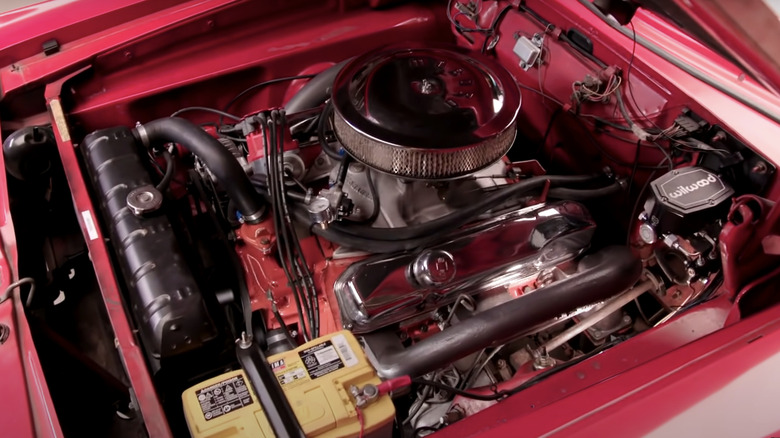Why The Dodge Max Wedge V8 Is Considered One Of The First Muscle Car Engines
When discussing the pioneering models of the muscle car era of the early 1960s, the Dodge Dart might not always be one of the first cars to be mentioned. Although Dodge and its Mopar cousins Chrysler and Plymouth produced their share of memorable muscle cars, the Mopar family is often overshadowed by industry icons like the Chevy Corvette and Ford Mustang. However, one Dodge creation that should not be treated lightly is the Max Wedge V8 engine, which first appeared under the hood of the 1962 Dart. The 413 cubic inch Max Wedge that debuted that year was aimed at drivers who wanted to take their cars to the drag strip and was an upgraded version of the RB series big block V8 that had replaced the first-generation Hemi.
The Max Wedge had several improvements over the standard RB engine that had first appeared in 1959. The Max Wedge got forged pistons and connecting rods, redesigned heads with larger ports and valves, dual valve springs, and a new intake manifold with twin 650 CFM Carter carbs mounted diagonally atop it. The Max Wedge was also issued in a 426 cubic inch version and appeared in select Plymouth models like the Savoy and Fury Super Stock during its brief lifespan.
The Max Wedge was replaced by the next generation Hemi
Max Wedge motors delivered more than 400 horsepower and roughly 500 lb-ft of torque. A Plymouth Savoy with a Max Wedge was the first factory stock car to run a quarter mile in less than 12 seconds, hitting the mark in 11.93 seconds in the summer of 1962. In 1963, the Beach Boys recorded "Shut Down," chronicling a race between a 413 Max Wedge-powered Super Stock Dodge and a Corvette Stingray. 1965 spelled the end for the Max Wedge when Chrysler brought back the Hemi.
Although it wasn't around for long, the Max Wedge ushered in the era of 400-plus horsepower V8s that powered the muscle car generation's most beastly models. In an episode of "Jay Leno's Garage" that featured a Max Wedge-powered 1964 Dodge Polara, Leno highlighted the engine's importance in paving the way for the cars that followed. "Whenever they talk about the muscle car era, they always start in 1964 with the GTO, and they go to about 1970, but there was a lot happening before 1964. This is a really fast car."
The engineering that went into the Max Wedge also influenced the development of later engines like the big block 440 that went into Mopar family legends like the Charger, Roadrunner, and Valiant.
